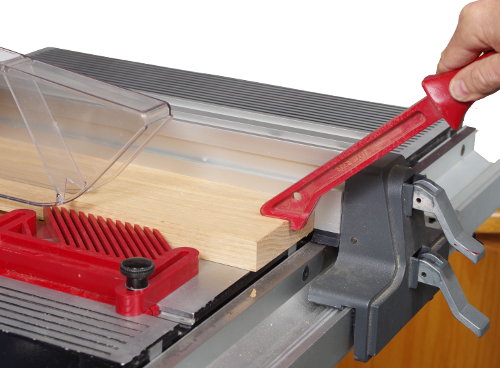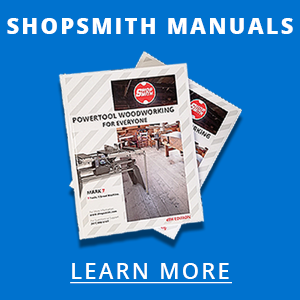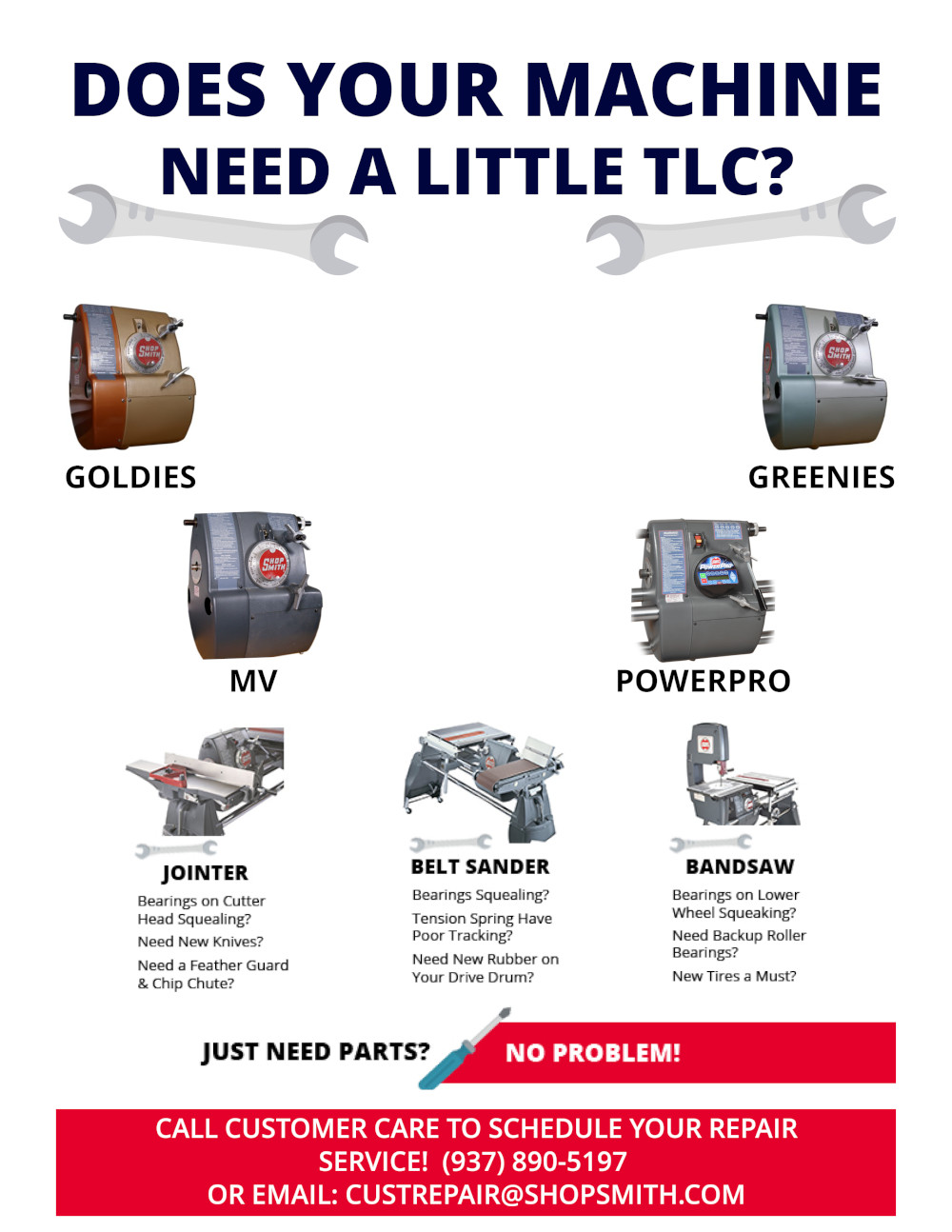Safety Rules for Table Saws
Table Saw Safety

Warning: Before using the table saw, read and understand these important safety instructions:
Danger Zone -- The danger zone on the Mark V in the sawing mode extends 3" on all sides of the blade, 2' in back of the blade, and 8' in front of the blade. The reason for the extended danger zone in front of the blade is that a saw blade can kick a board back. The blade may also kick a board forward, but not as hard as backward.
Safety Rules for Table Saws -- Here are some safety rules for operating the table saw:
- Always wear proper eye and ear protection.
- Always keep your hands, fingers, and other parts of your body out of the danger zone.
- Use push sticks, push blocks and other safety devices to help guide and control workpieces.
- Never operate the table saw without the upper and lower saw guards in place. The one exception to this rule is when you saw part way through a board--cutting a dado, groove or rabbet--then you must remove the upper saw guard. Whenever you remove the upper saw guard, keep the lower saw guard in place and work with extreme caution. Use safety devices to move the stock past the blade.
- Never stand directly in front of or in back of the blade; always stand to one side or the other.
- Make all adjustments with the blade stopped, with the one exception of changing the speed. Never try to change the configuration of the table or the power plant before the machine has stopped.
- Let the blade get up to full speed before cutting.
- Always cut against the rotation of the blade. This keeps the blade from grabbing the wood out of your hands.
- Use the miter gauge or rip fence to guide your work. Free-hand cuts are extremely dangerous, inaccurate and not recommended.
- Make a five-point check: all five locks--power plant, carriage, table height, table tilt and quill--should be secure.
- Never reach under the table to tighten the locks, remove scrap or make adjustments while the saw is running.
- Never reach over the blade while It's running, even with the upper guard in place.
- Do not rip large sheets of plywood or similar materials by yourself. Get at least one helper.
- Always use the proper table insert for the operation.
- Turn off the power and let the machine come to a full stop before you remove workpieces or clear scraps away from the blade.
Saw Guards -- The Mark V is equipped with saw guards to provide a physical barrier between you and the moving blade, no matter what height or angle you adjust the worktable.
These saw guards have several other safety features. The lower saw guard has a dust chute that allows you to attach a dust collection system so you can collect the waste while you're sawing. The upper saw guard is clear so you can see the cutline. There's a removable plastic insert in front of the blade to catch wood pitch. This can be easily cleaned to keep your line of sight clear.
The upper saw guard on the Model 500 is mounted on a splitter that keeps the saw kerf from closing and binding the blade. On this splitter there are two anti-kickback pawls that help keep the blade from kicking the stock back toward you.
The upper saw guard on the Model 510 has a riving knife that is positioned 1/8" from the blade regardless of stock thickness. The riving knife has anti-kickback cams that help capture the stock in the event of a kickback.
Avoiding Kickback -- If, for any reason, the saw blade should bind in the workpiece, it can kick the stock back toward the operator with great force and speed. Also, if any piece of scrap (or other object) is left on the table and slides into the moving blade, it can be thrown with considerable force. Actually, kickback is one of the greatest hazards in running a table saw. Some of the common causes of kickback include:
- Failing to use the upper saw guard and safety devices.
- Crosscutting against the rip fence without using a spacer.
- Using a dull or dirty blade or a blade with insufficient set.
- Cutting freehand or ripping badly warped wood.
- Dropping pieces of stock on an unguarded saw blade.
- Letting go of material before it is past the saw blade.
- Ripping stock with loose or large, unsound knots.
- Cutting wet or improperly seasoned wood.
© SHOPSMITH - DREAM IT! BUILD IT! SHARE IT!





